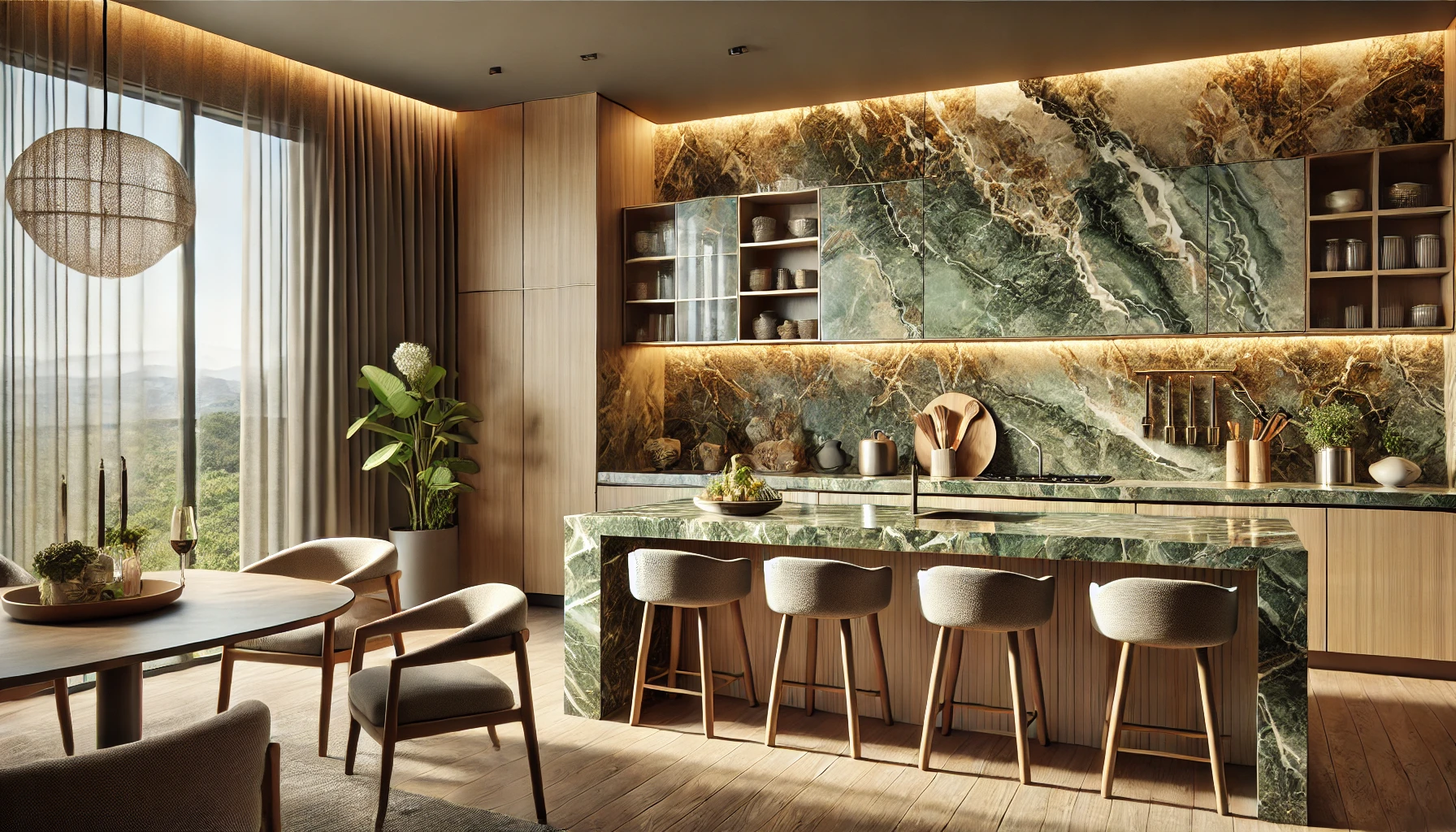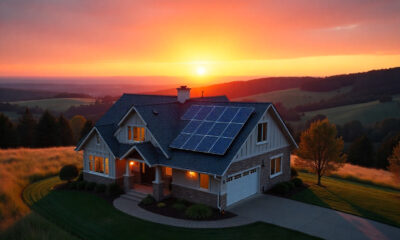HOME IMPROVEMENT
Olive Onyx: The Natural Stone Redefining Elegance

In the world of luxury interiors and architectural refinement, few materials can match the visual allure and timeless sophistication of olive onyx. With its swirling patterns of green, ivory, and gold, this rare natural stone is making a name for itself not only in elite homes but also in commercial spaces that demand both style and exclusivity.
Olive onyx isn’t just another stone—it’s an experience, a statement piece, and a testament to nature’s ability to craft something extraordinary. This article delves into everything you need to know about olive onyx, including its origins, applications, care, and why designers and homeowners alike are falling in love with this material.
What Is Olive Onyx?
Olive onyx is a type of banded calcite, part of the onyx family known for its translucent quality and layered appearance. What makes olive onyx unique is its distinctive coloration—a harmonious blend of earthy greens, soft golds, creams, and occasional hints of deep brown.
Unlike granite or marble, onyx has a more translucent and softer finish, which means it can be backlit for dramatic effect. Olive onyx, in particular, is prized for its rich, natural tones that mimic the organic beauty of an untouched landscape.
Origins and Geological Background
Olive onyx forms over thousands of years from the precipitation of carbonate minerals in cold, spring-fed water environments. This slow process creates the layered appearance and swirling patterns onyx is known for.
Most high-quality olive onyx is quarried from countries such as:
-
Iran
-
Mexico
-
Turkey
Each quarry offers subtle variations in color, giving designers the chance to select slabs that align with their vision. Some feature more prominent green bands, while others showcase a creamier tone.
Olive Onyx in Interior Design
When incorporated thoughtfully, olive onyx can transform an ordinary space into a luxurious sanctuary. Its exotic patterns and radiant hues make it a favorite for the following applications:
1. Kitchen Countertops
Although less durable than granite or quartz, olive onyx countertops are breathtaking. Often installed in gourmet kitchens or for decorative islands, they serve more as focal pieces than high-traffic work surfaces.
2. Bathroom Vanities
The stone’s calming color palette makes it perfect for spa-inspired bathrooms. When paired with gold or brushed brass fixtures, it creates an ambiance of understated luxury.
3. Backsplashes and Wall Panels
Olive onyx used as a backsplash, especially when backlit, provides a stunning focal point. It’s ideal for both kitchens and upscale bars.
4. Fireplace Surrounds
For those looking to add warmth and richness to a living space, olive onyx makes for a dramatic fireplace surround.
5. Flooring and Inlays
Used sparingly, it adds a touch of elegance to foyer floors or as part of mosaic inlays.
Backlighting Olive Onyx: A Game-Changer
One of the most spectacular features of onyx, especially olive onyx, is its ability to transmit light. When backlit, the stone becomes alive—its colors deepen, and the layers glow with an ethereal quality.
Designers often use LED panels to backlight:
-
Bar tops
-
Bathroom walls
-
Reception desks
-
Stair risers
This effect creates a luxury-meets-art vibe, making the stone not just functional, but experiential.
Pros and Cons of Using Olive Onyx
Let’s explore the advantages and considerations before incorporating olive onyx into your next project.
Pros
-
Stunning Aesthetic: No two slabs are alike; each piece is a natural work of art.
-
Translucency: Allows for creative backlighting applications.
-
High-End Appeal: Instantly elevates the luxury quotient of any room.
-
Earthy Elegance: Perfect for biophilic or nature-inspired interiors.
Cons
-
Softness: More prone to scratches and etching compared to granite or quartz.
-
Requires Sealing: Needs regular sealing to protect against stains.
-
Higher Cost: Due to its rarity and aesthetic value.
-
Not Ideal for High-Traffic Areas: Best used in decorative or low-impact zones.
How to Care for Olive Onyx
Olive onyx is undeniably beautiful but requires careful maintenance. Here are some care tips:
-
Seal Regularly: Seal the surface every 6–12 months to prevent staining.
-
Clean with pH-Neutral Cleaners: Avoid acidic or abrasive products.
-
Use Coasters and Trays: Especially for drinks and toiletries.
-
Wipe Spills Immediately: Especially if it involves wine, citrus, or oils.
-
Avoid Direct Impact: Place mats or soft pads under heavy items.
By investing in regular upkeep, you’ll preserve olive onyx’s beauty for years.
Sustainability of Olive Onyx
While natural stone is inherently more eco-friendly than synthetic materials (due to its lack of chemical processing), responsible sourcing is essential.
Look for:
-
Suppliers with ethical mining practices
-
Stones certified by environmental building programs
-
Local suppliers (if possible) to reduce transportation emissions
Incorporating a luxurious material like olive onyx doesn’t have to compromise your eco-conscious values.
Cost of Olive Onyx
Olive onyx is considered a premium stone, and its cost reflects that status. Prices vary based on slab size, color variation, and country of origin.
On average, expect to pay:
-
$75 to $250 per square foot (installed)
Factors that affect pricing:
-
Rarity of the vein
-
Country of origin
-
Thickness of the slab
-
Installation complexity (especially for backlit features)
For designers and homeowners who see stone as art, the price is well worth the investment.
Also read: Gayle Samuels: A Multifaceted Talent in Theatre and Screen
Conclusion
Olive onyx is more than a material—it’s a masterpiece of nature, a design statement, and a timeless luxury. Its unique blend of color, translucency, and pattern sets it apart from other natural stones. Whether it graces your home as a backlit wall or elevates your bathroom vanity, olive onyx brings depth, elegance, and character that few other materials can match.
Though it requires care and comes at a premium, the results speak for themselves. From high-end residences to five-star hotel lobbies, olive onyx continues to leave a lasting impression—one polished surface at a time.
FAQs
What makes olive onyx different from regular onyx?
Olive onyx stands out due to its earthy green, ivory, and brown coloration, offering a more natural, organic look compared to brighter onyx varieties.
Can olive onyx be used in kitchens?
Yes, but with caution. It’s best used for decorative kitchen islands or backsplash areas rather than high-use countertops due to its softness.
Does olive onyx need to be sealed?
Yes. Regular sealing helps protect the surface from stains and moisture, especially in areas prone to spills or humidity.
Is backlighting olive onyx expensive?
Backlighting can add to the cost but dramatically enhances the stone’s appearance. LED panels are commonly used for energy efficiency and even lighting.
Where is olive onyx sourced from?
The most popular sources are Iran, Pakistan, Turkey, and Mexico, with each region offering slightly different shades and patterns.

-

 EDUCATION3 months ago
EDUCATION3 months agoFree Cover Letter Generator: Build Job-Winning Letters in Minutes
-

 GUIDE3 months ago
GUIDE3 months agoBenefits of Online Personal Training for Fitness Success
-

 BUSINESS2 months ago
BUSINESS2 months agoGrow Your Audience with USA Instagram Followers
-

 TECH2 months ago
TECH2 months agoFreedom Forever Solar Reviews Explain How Conversational Intelligence Turns Customer Interactions into Insights